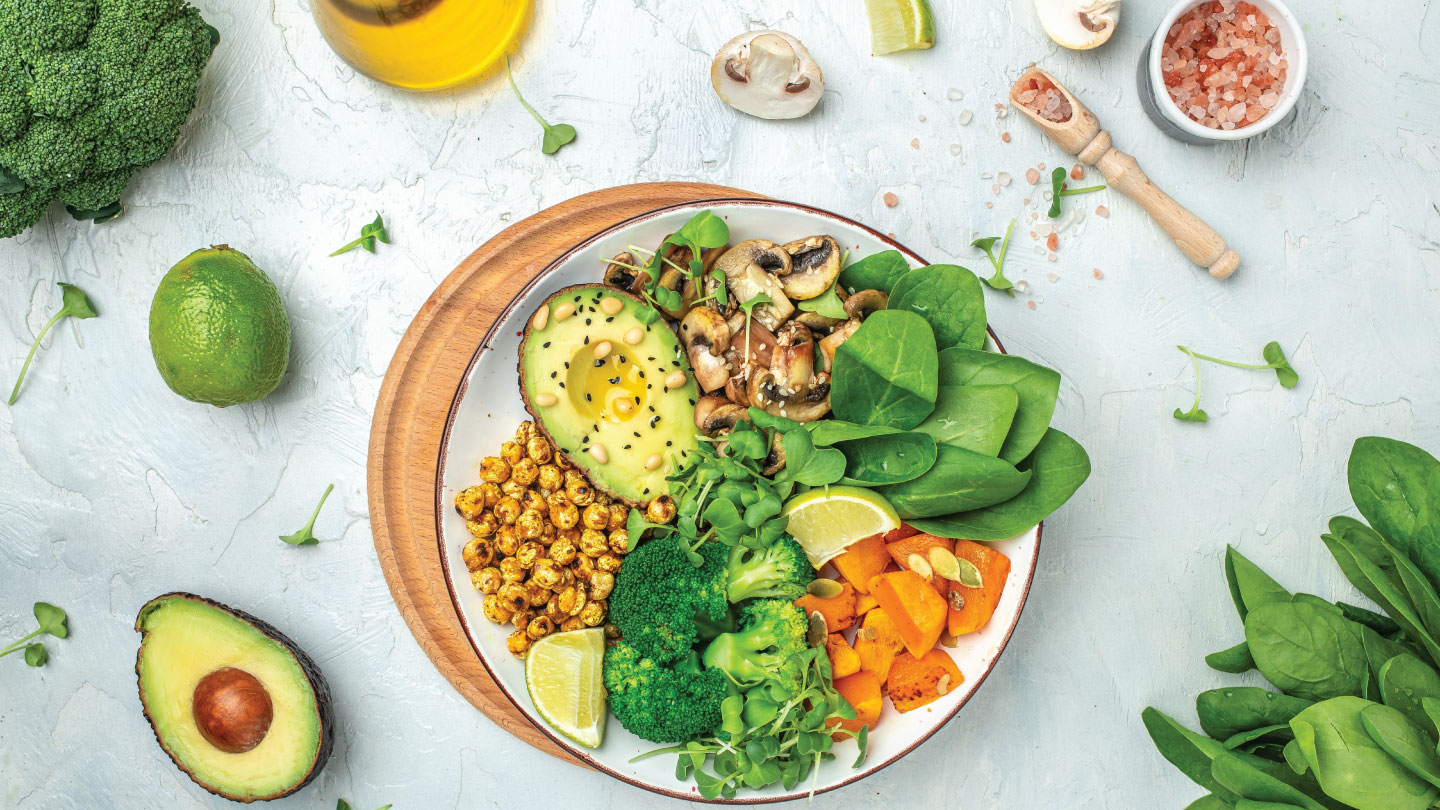Nutrition
Fermented Foods To Improve Gut Health
Our gut thrives in the presence of good bacteria. These delicious fermented foods contribute rich probiotic bacteria boosting the health of our digestive and immune systems.

Heard of gut bugs? Don’t worry, these aren’t bad! Good gut bugs—a result of fermented foods—are greatly known for complex flavours and health benefits. Fermentation is a significant part of cooking in India. “Fermentation preserves the food, and produces beneficial enzymes, B-vitamins, Omega-3 fatty acids, and various strains of probiotics,” states a study by Agricultural Research Communication Center. What happens in fermentation is the microbes converting certain food substances into others. The three main fermentations that we use are lactic acid fermentation, alcohol fermentation and acetic acid fermentation. From making our foods more digestible to boosting regularity of the bowel movements, it can exert a range of other benefits too such as lowering cholesterol, boosting immunity and promoting antioxidation. Snack on these healthy, yet delicious gut-friendly foods:
- Sauerkraut: One of the oldest forms of preserving cabbage, sauerkraut contains lactic acid, tyramines, vitamins, and minerals. This low-calorie probiotic dish contributes to a healthy digestive flora by delivering probiotics into the gastrointestinal system. A study published in Nutrients, 2019 suggests that Sauerkraut can help in control of bladder and prostate cancer cells. The other health benefits of Sauerkraut include a healthier heart, stronger immune system, and good brain health.
Did you know? The word “sauerkraut” literally means “sour cabbage.” From sauer “sour” + “kraut” vegetable, cabbage.
1. Kefir: is a natural complex fermented milk product containing more than 50 species of probiotic bacteria and yeast. It can be prepared using different types of milk including camel, goat, buffalo, sheep and cow. How do you make kefir? You can prepare kefir via microbial fermentation that involves milk inoculation with kefir grains. The health benefits of the drink include antioxidative, anti-allergenic, anti-tumour, anti-inflammatory, cholesterol-lowering, constipation-alleviating, and anti-microbial properties. “Kefir supports excellent gastrointestinal resistance and it has a potential to improve inflammation-related indicators and blood pressure,” reports the journal Nutrients, 2019 edition.
Did you know? Kefir is derived from the word kef, which means ‘pleasant taste’ in Turkish.
2. Pallapam: Prepared from the fermented premixed rice and coconut batter, pallapam is a kind of dosa. Mainly eaten in southern India and Sri Lanka, this bowl-shaped thin pancake with crisp edges and fluffy centre is rich in vit B12 due to fermentation. Pallapams are easy to digest and keep away gastric problems such as acidity and constipation. Instead of adding traditional white sugar to the pallapam, one can also consider adding paste made from dates to give it a unique taste.
Did you know? Pallapam can help you boost your immunity and energy levels.
3. Kombucha: Kombucha is a drink prepared by fermenting black or green tea with a specific culture of probiotics. To make this, tea leaves and water are fermented with kombucha culture. Fermentation produces several acids, a very small amount of alcohol, and gases which give it an effervescent texture. A study published in the journal Antioxidant, 2020 says that kombucha tea helps in managing cholesterol levels, type-2 diabetes, and obesity, thus reducing the risk of heart disease too.
Did you know? During fermentation, a mushroom-shaped cloud appears on the jar. Due to this, kombucha is also called mushroom tea.
5. Kimchi: It is a fermented dish which was created to store vegetables for a longer time (akin to pickling). It consists of napa cabbage along with seasonings such as garlic, ginger, salt, sugar, and chilly. But there are many variations of kimchi and you can also add ingredients like radish, celery, and eggplant. How do you make it? All ingredients are, initially, brined for a couple of hours and then fermented along with spices for, typically, 1-5 days. The brining removes the harmful bacteria while fermentation increases the healthy bacteria. The journal Medicine notes that kimchi reduces inflammation, aids weight loss, strengthens the immune system, and reduces the risk of heart disease.
Did you know? Kimchi has been an essential part of the Korean Diet since the 7th Century AD
6. Tempeh: Eat it as a snack, a meal or dessert—it is easy to work with tempeh. Saute it, fry it or just dip in tasty sauces! A tempeh is a cake-like structure that is the result of fermenting cooked, soaked soybeans. The fermentation induces the synthesis of good and healthy enzymes, which contribute to the development of desirable texture, flavour, and aroma. Tempeh improves digestive health, reduces inflammation and decreases cholesterol levels. Also, you get a variety of other vitamins and minerals such as calcium, manganese, phosphorus, iron, B vitamins and magnesium with tempeh.
Did you know? Tempeh originated from Indonesia. It is well-known as a vital source of protein on the island of Java.
7. Gundruk: A famous fermented leafy food vegetable of Gorkha tribes in India, gundruk is prepared using leaves of cauliflower, mustard greens, bamboo shoots and roots of radish. It acts as an appetizer and as a side dish. Dark brown or black in colour, gundruk has a strong, fermented aroma with varying degrees of sourness. Famous in the areas of Sikkim, Darjeeling and Nepal, it is believed in those regions that consuming gundruk improves milk supply in new mothers. A paper published in Indian Journal of Agricultural Sciences states that fermented bamboo shoots in this dish offer antioxidant, anti-cancer, anti-aging properties.
Did you know? Gundruk enables families to preserve large quantities of leafy greens for the rest of the year—especially for areas where vegetables are scarce in winter.
8. Kanjika: Kanjika (Kanji) is a probiotic drink consumed in North India. Known to have significant medicinal properties, it is usually prepared via fermenting powdered rice. But sometimes, rice is also replaced with millets, barley, bamboo leaves and radish to give it a unique flavour. A perfect drink for vegans, the flavour is tart, salty, zingy—and sometimes pungent too. The complexity of the flavours in kanji makes it unique. As with other fermented foods, the lacto-fermentation may boost heart and brain health besides immune-boosting and anti-diabetic properties.
Did you know? Kanji is a result of bacteria found in the air and yeast found in the skin of vegetables.
9. Yoghurt (Dahi): A staple in most Indian homes, yoghurt is a super nutrient dense food. A good source of dairy protein, calcium, magnesium, vitamin B-12 and other key fatty acids, it enhances nutrient absorption and digestion. The Nutritional Journal by American Society says that the bacteria in yoghurt positively impacts the intestinal health. It helps stimulate the gut and immune system, and decreases gas, diarrhea and bloating.
Did you know? Yogurt is thought to have been invented in Mesopotamia around 5000 BC.
EXPLORE MORE
From fibre and protein to gut health and mindful meals, these are the healthy eating lessons that stood out in 2025!
Bloating isn’t just about overeating or bad food choices. According to expert nutritionist Dr Lakshmi Kilaru, it’s often the result of multiple factors. Keep reading to know more.
If you’re on a GLP-1, your diet can make or break your health journey. Here’s your guide to avoid common pitfalls.
Bright, tangy, and naturally refreshing, this orange chutney offers a burst of citrusy sweetness with a gentle hint of spice. It’s the perfect accompaniment to elevate daily meals with freshness and depth.







.jpg)

.jpg)
